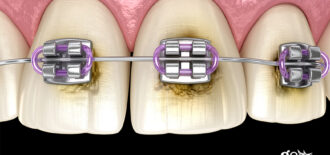Early Orthodontic Treatment for Children
As a parent, providing the very best for your children is important, and your children deserve the best orthodontic treatment can offer. Some children may benefit from two-phase treatment that involves early interventive treatment. Is this right for your child?
What’s Preventive or Interceptive Orthodontics
Preventive or interceptive orthodontics allows the orthodontist to take advantage of the natural growth of the jaw to accomplish orthodontic treatment. It begins before all of the permanent teeth have erupted and before the jaw has stopped growing. It allows for the permanent teeth to erupt in the most ideal environment by guiding the growth of the jaw, and allows for the next phase of treatment to be more effective and efficient.

What does the American Association of Orthodontists recommend?
The American Association of Orthodontists recommends that children visit an orthodontist for the first time at the age of seven. This doesn’t mean that your child will require orthodontic treatment at this time, however, it allows the orthodontist to monitor your child’s smile and then recommend treatment at the time it will have the most impact.
If Dr. Gire believes that your child is an ideal candidate for two phase treatment, the first phase typically begins between the ages of 7 and 9. The next phase will follow around age 11 or later depending on the eruption of the remaining adult teeth. Early treatment aims to correct the growth of the jaw and bite problems that, if left until the jaw has stopped growing, could worsen over time or make future treatment more involved.
Signs that could indicate your child may benefit from early treatment:
- Irregular or early loss of baby teeth
- Difficulty biting or chewing
- Breathing through the mouth
- Extended thumb-sucking or pacifier use
- Speech issues
- Teeth that come together abnormally or not at all
- Shifting of the jaws
- Teeth Crowding around age 7 or 8
Can my child benefit from early orthodontic treatment?
Some orthodontic issues can be inherited, such as crowding, abnormal spacing, jaw issues, and bad bites. Other issues can be the result of an injury, early or late loss of baby teeth, or habits such as thumb-sucking. While many people think teenagers are the typical orthodontic patient, waiting until the jaw has stopped growing can actually make treatment more involved than it would be if treatment began at an earlier age.
If your child is around the age of seven and shows any of the above signs, schedule an appointment for an orthodontic consultation.




